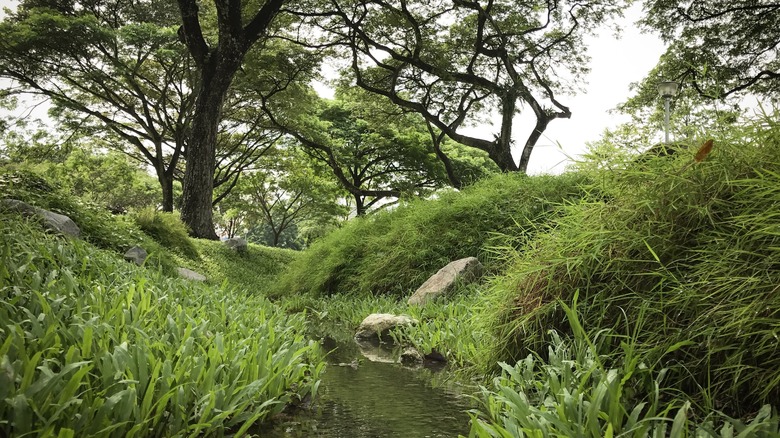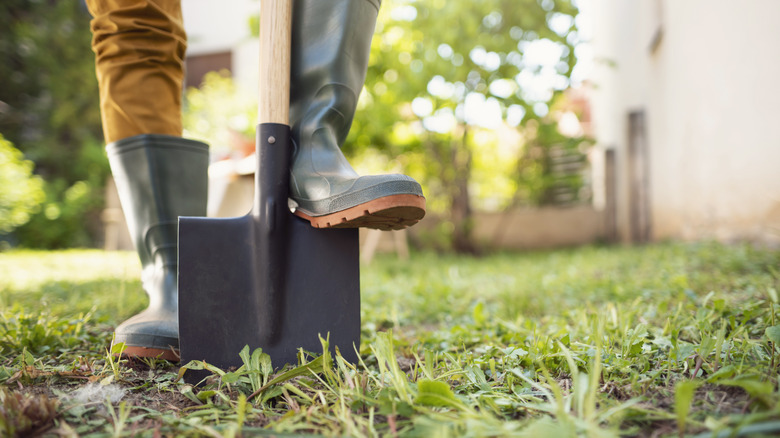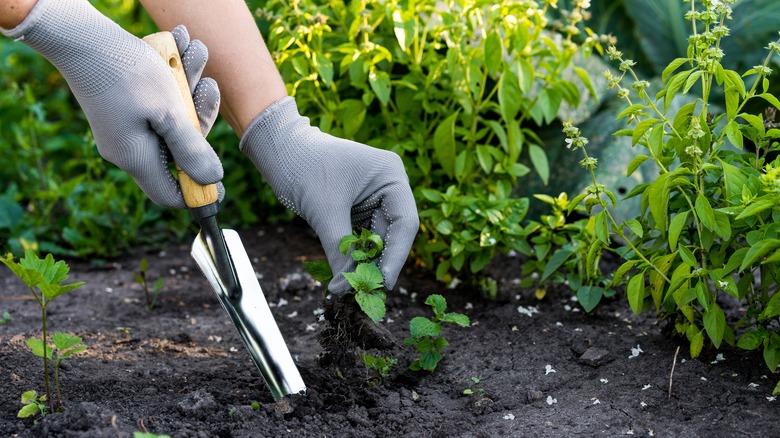The Drainage Solution That Will Keep Your Grass Happy And Healthy
When your lawn starts resembling a swamp more than a slice of paradise, it's high time to think about installing a grass swale. At first glance, a grass swale might seem like a mere ditch filled with vegetation. However, its construction and the science behind its operation are anything but simple. This lawn drainage solution is surprisingly easy to integrate into your yard and excels at removing urban pollutants. Grass swales capture and filter runoff, promoting groundwater recharge and reducing the burden on stormwater systems. The best part? You can easily spot and clear any pollution or blockages, keeping your lawn looking sharp and well-drained.
But grass swales are more than just a practical drainage solution; they're a commitment to sustainable landscaping. The low upfront cost makes them an appealing option for a wide range of homeowners, demonstrating that significant environmental contributions don't have to come with a high price tag. In short, these swales don't just solve your drainage problems; they also enhance the ecological health of your surroundings — all without requiring a hefty investment.
As you contemplate adding a grass swale to your landscape, understanding the key aspects—like the ideal slope for effective drainage, the best vegetation to plant, and how to maintain the swale for longevity—is crucial. Proper maintenance, integrated into your regular garden care, ensures the swale continues to perform its vital functions without becoming an eyesore.
How to construct a swale
To create the perfect swale, you need to balance aesthetics with functionality. This ensures the swale is not just another element in your landscape but a proactive contributor to your yard's overall health and sustainability. Kicking off a grass swale project begins with a good look at your terrain. Ideally, you're aiming for a slight incline, with a 1% to 2% slope hitting the sweet spot, though you can push this up to 4% if that's what you're working with. The form your swale takes, whether that leans more towards a trapezoidal shape or a semi-circle, greatly influences its knack for filtering out unwanted pollutants. You'll want to aim for a bottom width between 2 and 8 feet. Make sure it's long enough to detain water for about 10 minutes, which should be ample time to address your specific drainage requirements.
The permeability of the soil in your swale's vicinity is non-negotiable; after all, a swale that holds onto water too tightly is missing the mark. The goal is soil that welcomes water, letting it infiltrate smoothly, which is foundational for the drainage effectiveness of your swale. Observing how the swale behaves after a downpour is telling; ideally, any pooled water bids farewell within a 48-hour window. This quick turnaround indicates that your swale is on its A-game.
Swale maintenance tips
When it comes to maintenance, it's essential to check on your swale regularly. This is especially true after a heavy rainstorm — you can catch any potential issues like blockages or signs of erosion early on. Tackling these problems right away helps keep your swale working as it should. As for maintaining the grass in your swale, you need to find the perfect balance when mowing. Keeping it trimmed to just the right height (no less than 2 ½ to 3 inches) lets water seep through efficiently, avoiding any overgrowth that might slow down the flow. Too much growth can lead to blockages, and too little might cause erosion, so regular mowing is critical to helping your swale do its job.
You'll want to keep an eye out for debris and sediment building up, as they can cause clogs if left unchecked. Make sure your swale is clear of any obstacles to ensure water can glide through smoothly, which is precisely the point of the swale. Also, keep a lookout for any erosion starting to form—catching it early can save you a lot of hassle and repair costs down the line. To really boost your swale's performance, get rid of any weeds or fallen leaves. Lastly, now and then, re-seed the vegetation and show the soil some love by adding organic matter. This will enhance the swale's ability to hold and filter water.


